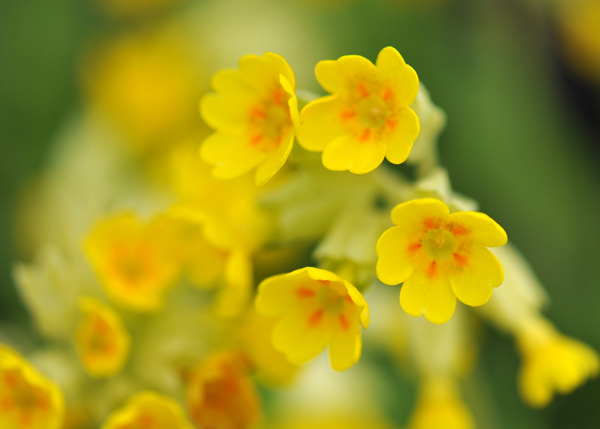ARIEL (Sings and helps to attire him.)
Where the bee sucks, there suck I,
In a cowslip’s bell I lie;
There I couch when owls do cry.
On the bat’s back I do fly
After summer merrily.
Merrily, merrily, shall I live now,
Under the blossom that hangs on the bough.
PROSPERO Why, that’s my dainty Ariel! I shall miss thee,
But yet thou shalt have freedom.—So, so, so.—
To the King’s ship, invisible as thou art;
There shalt thou find the mariners asleep
Under the hatches. The master and the boatswain
Being awake, enforce them to this place,
And presently, I prithee.
ARIEL I drink the air before me and return
Or ere your pulse twice beat. Exit. (5.1.88-103)
Ariel’s last song, as vividly strange as all the rest: this is the first time that Ariel has alluded to their size which is (here at least) apparently diminutive. This is Ariel as fairy, describing themself in terms akin to Puck and the other fairies in Midsummer Night’s Dream. Like bees, they drink the nectar from flowers, and creep inside the bell-shaped flower of the cowslip. Shakespeare liked cowslips, it seems, and attributes a disturbing sensuality to them. In Midsummer Night’s Dream the cowslips tall are the pensioners, the bodyguards of Titania, the fairy queen, their golden petals spotted with rubies, crimson freckles, which the Fairy describes to Puck as fairy favours, in which all the savour, the scent and the value of the flower is found (2.1.10-13). In Cymbeline, Iachimo describes the mole on the sleeping Innogen’s breast as cinque-spotted, like the crimson drops i’th’ bottom of a cowslip (2.2.38-9.) Ariel couches, sleeps, is concealed, in the flower when the owls cry – at night? But they also fly on the back of a bat, presumably also at night, chasing after summer, that is, fleeing winter, to live in perpetual sunshine and warmth; to live merrily – merrily– under blossom-covered boughs. The song evokes a strange and beautiful picture; what is most likely the song’s original setting (by the court composer Robert Johnson) survives, but the eighteenth-century version by Thomas Arne is better known. (It was written for the 1740 revival of The Tempest in its adaptation by Shadwell and Dryden; Arne’s song may not have been added until 1746.)
Prospero’s response is both apt and affectionate, and affirms the sense of Ariel as tiny, or at least capable of becoming so: Why, that’s my dainty Ariel! I shall miss thee. And again, the promise of freedom, soon, but not quite yet. There is more yet to be done to bring together all the pieces of the plan. Prospero adjusts his garments (Ariel may have brought more; a cloak, perhaps, or Prospero may have even gone off-stage for a complete change. The song would allow for it, with Prospero reappearing as it concludes.) He needs to look just so, so, so, so; the hat is angled, the belt of the rapier adjusted. And a final(?) mission for Ariel (and a casual reminder that they’re currently still invisible): they must go back to the ship and the mariners, in an enchanted sleep below decks. The master and the boatswain will need to be awakened, however, and brought, enforced, to this place, presently, right now. (The other mariners can remain below decks. Surely all the company, save perhaps boys from the masque, will soon be on stage.)
And Ariel is off, plunging through the air, their natural element; they will return in a heartbeat.
Here’s a cow-slip…


